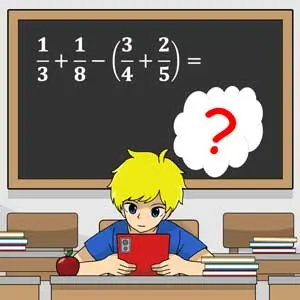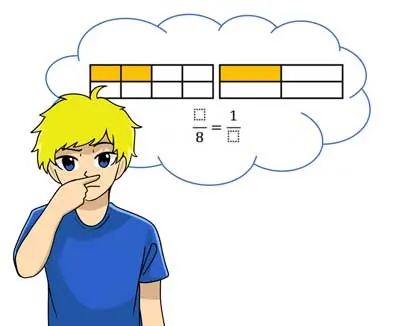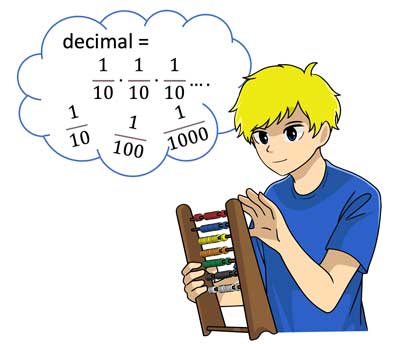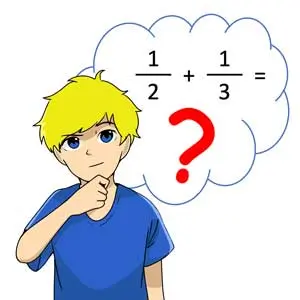Fractions exercises
Master fractions with ease with the best exercises

With Mathefritz you can learn
fractions quickly and interactively!
Understanding fractions correctly
Learn to master fractions easily and effectively! Our fractions exercises are just right for you. Fractions can seem intimidating at first, but with the right tricks and exercises you can master them effortlessly.
Our selection of fractions exercises are designed to help you understand fractions and build your confidence in working with fractions. From basic fraction operations, addition and subtraction of fractions to multiplication and division in more complex tasks, our exercises provide comprehensive coverage of all relevant concepts.
Whether you have difficulties with adding, subtracting, multiplying or dividing fractions, our exercises will help you to improve your skills. We offer you interactive online exercises with direct control of the solutions as well as the classic fractions exercises as PDFs to print out, of course with solutions.

Calculating fractions –
Getting started with fractions
In this chapter, we will first learn about fractions. What are the parts of a fraction called? What is the numerator and what is the denominator of a fraction? We can find many interactive fraction calculation exercises or fraction calculation exercises with solutions as a PDF to print out!
The fraction calculation tasks:
Reduce and expand
Reducing and expanding fractions are basic mathematical operations that are applied to fractions to transform them into different forms without changing their value. These concepts are especially important when calculating fractions with algebraic expressions.
Reducing a fraction involves dividing the numerator and denominator by a common divisor to represent the fraction in its smallest form. A common divisor is a number that divides both the numerator and the denominator without a remainder. Shortening makes the fraction simpler and clearer.
To expand a fraction, you multiply both the numerator and denominator by the same factor. This factor can be an integer or even an expression. The expansion makes it possible to convert the fraction into an equivalent form that has the same value but may have a different representation.

Fancy a first little exercise, or go directly to our page on the Brechnrechnen tasks Shorten and expand!
Learning decimal fractions

Can you calculate fractions with decimals? These are also called decimal fractions. Fractions can always be converted into decimal fractions if you can convert the numerators into a power of ten or a number of tens by reducing or expanding the fraction. Here is just a small example.
Fractions tasks:
Percentages and fractions

Fractions can be represented as percentages and vice versa. Do you know how to do this? The denominator of the fraction must always be 100. To do this, you have to expand or shorten the fraction. Do you know what two fifths are as a percentage?
Exactly, it is 4 tenths or 40 hundredths and therefore 40%.
Test your knowledge. How good are you at fractions exercises with percentages? Try it out here.
Fractions exercises: Adding and subtracting fractions
To add fractions, they must have the same denominator. If they have different denominators, they must first be reduced to the lowest common denominator (this requires the lowest common multiple).
Since the fractions have the same denominator, you simply add the numerators and keep the common denominator. The result is a new fraction. Example:

Fancy a first fraction calculation task before moving on to the large addition and subtraction of fractions learning package?
